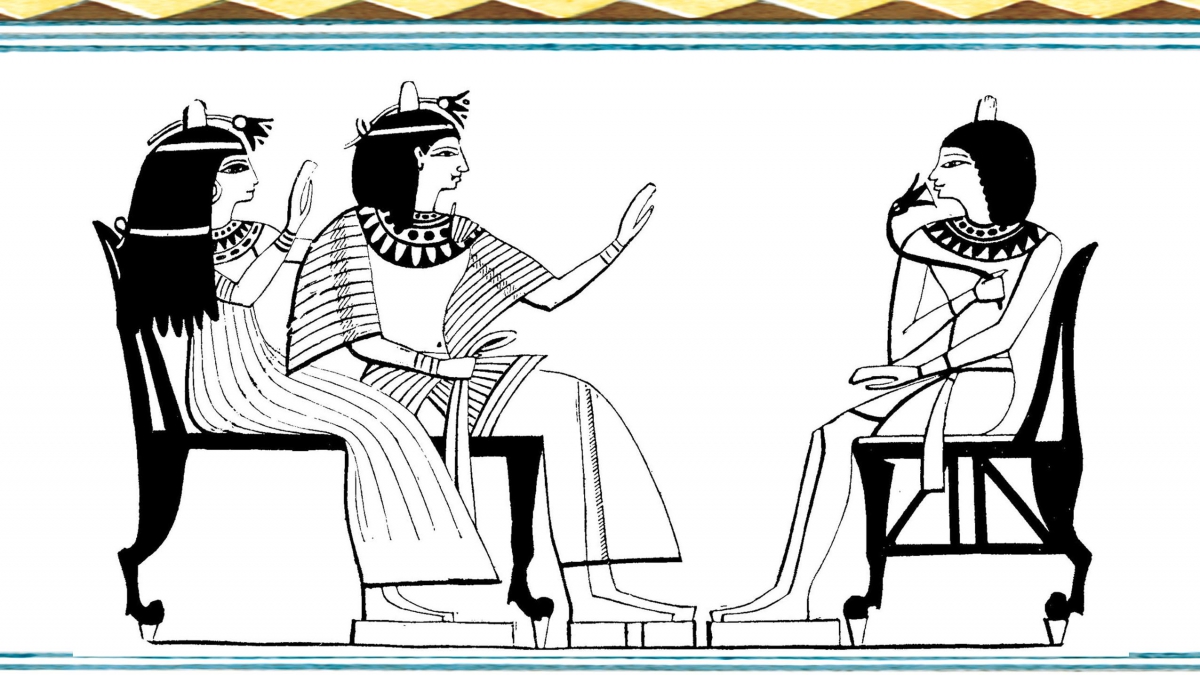Social Structure
At first glance, ancient Egyptian society seems highly structured and rigidly stratified, particularly in the Old Kingdom. Ptahhotep, the wise Vizier who lived about 2414-2375 BCE, put it this way:
If you are in the antechamber,
Stand and sit as fits your rank,
Which was assigned to you the first day.
Do not trespass.
Some historians use the model of a pyramid to show Egyptian society: the king is at the apex, nobles and scribes fill in the top steps of the pyramid, and the vast mass of the people, peasants, are at the bottom. This model is a reasonable one in view of the evidence we have, but it is important to remember how much evidence we do not have. We know far less about Egyptian society in the Age of the Pyramids than we do about later times, such as the New Kingdom. Archaeology often surprises. For example, excavations by Zahi Hawass and Mark Lehner at Giza over the past decade have uncovered cemeteries of craftsmen and construction workers. Carpenters and other skilled workers seem to have lived remarkably well.
Our knowledge of the social stratification of pharaonic society comes from many sources, including study of tomb paintings and archaeology. The most colourful written sources are texts of the Middle and New Kingdoms which were intended for study by young scribes. These are intended to show the career of a scribe as the perfect way of life, and to illustrate how dreadful other jobs could be. These texts may distort our view because we do not have such texts for the Old Kingdom. In fact, Ptahhotep seems to have a very different view when he gives advice to his son:
Don't be arrogant because of your knowledge,
Consult the uneducated as well as the wise;
The limits of skill cannot be not reached,
No craftsman's skills are perfect;
Good speech is more hidden than malachite,
Yet it may be found among servants at the grindstones.

An individual's position in society was largely determined by the status of his or her parents. Social class determined whether or not a person would learn a trade, become literate, be a wealthy landowner or work the land. The Egyptian ideal was that the child would follow in the steps of the parent. The titles written in tombs sometimes bear this out, and show that members of the same family worked in the same professions, though not always inexactly the same capacity.
For example, during the Fifth Dynasty, a man named Nefer and his father, Ka-hay were musicians. Both bore the title "Controller of Singers;" but while the father was also "Inspector of Singers," his son was "Inspector of the Artisan Workshops." Ka-hay had six titles, and his son collected eight. Did the son achieve a higher status than his father?
